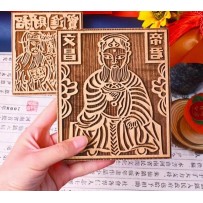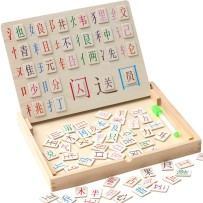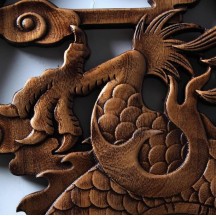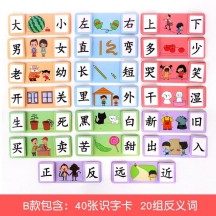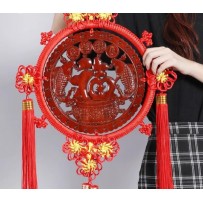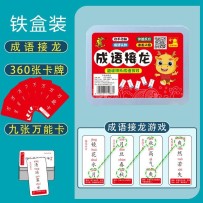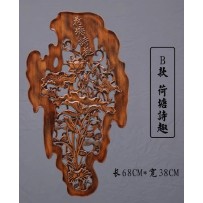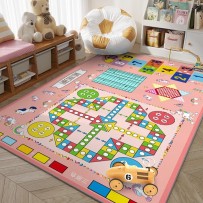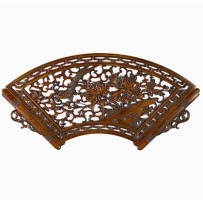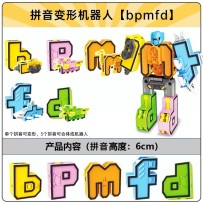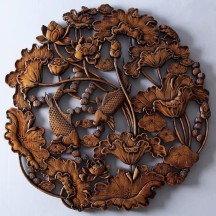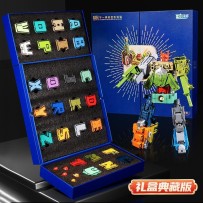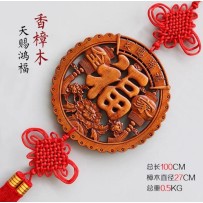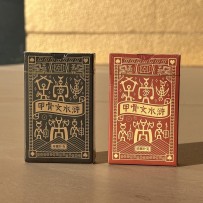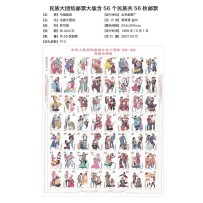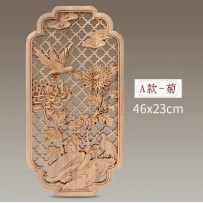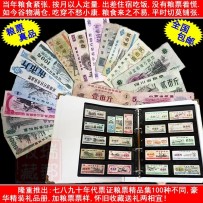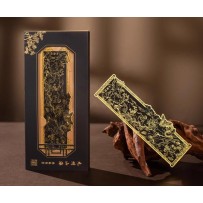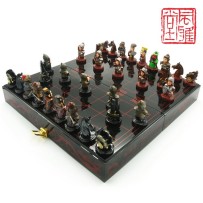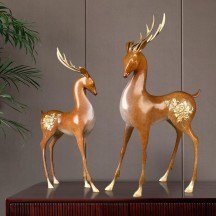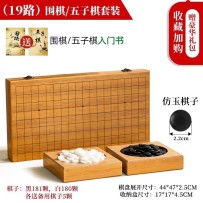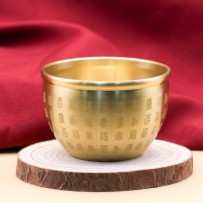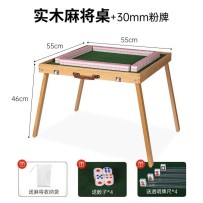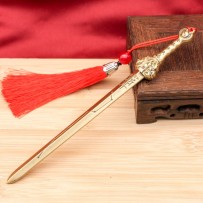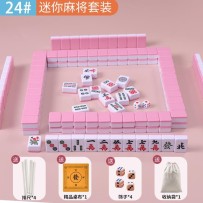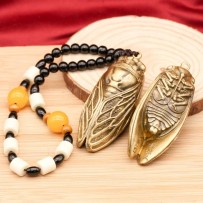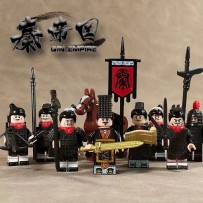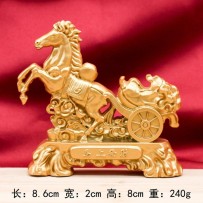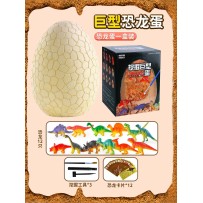Jia Ma, also known as "paper horse" or "divine paper", is an ancient and mysterious folk woodblock print used in folk sacrificial activities to pray for blessings and eliminate disasters. It is popular throughout Yunnan Province. Among them, the Bai ethnic group's Jia Ma is the most distinctive. It is a kind of woodcut work that still exists among the common people in the primitive witchcraft and etiquette of the Bai ethnic group.It is a comprehensive reflection of Dali woodcarving techniques, printing techniques and papermaking techniques on primitive religious sacrificial items. It is a precious cultural heritage and has been included in the third batch of intangible cultural heritage list of Dali Prefecture.
Subcategories
Dongyang woodcarving is renowned for its exquisite carving craftsmanship. Artisans employ a variety of carving techniques, such as relief carving, through carving, and round carving, to vividly present various patterns on camphor wood boards. The lines are smooth and the layers are distinct, demonstrating an extremely high artistic standard.
The Chinese knot symbolizes unity, beauty, happiness and peace, and has meanings such as reunion, completeness and good fortune. Dongyang woodcarving has a long history. The patterns carved on it often contain rich cultural significance, endowing the pendants and ornaments with a deeper cultural background and expressing people's yearning for a better life.
Idiom Solitaire is a word game in which players continue the chain by using the last character of one idiom as the first character of the next. This game is not only entertaining but also helps improve language skills, preserve cultural heritage, promote social interaction, and support emotional well-being.
Dongyang woodcarving mainly features flat relief, and is characterized by multi-layered relief and scattered perspective composition. Carvers employ techniques such as thin relief, low relief, deep relief, high relief, and multi-layer layering to create works that are rich in layers yet dynamic, with smooth and natural lines, enabling them to vividly present various patterns on camphor wood.
Dongyang woodcarving mainly features flat relief, and is characterized by multi-layered relief and scattered perspective composition. Carvers employ techniques such as thin relief, low relief, deep relief, high relief, and multi-layer layering to create works that are rich in layers yet dynamic, with smooth and natural lines, enabling them to vividly present various patterns on camphor wood.
Dongyang woodcarving mainly features flat relief, and is characterized by multi-layered relief and scattered perspective composition. Carvers employ techniques such as thin relief, low relief, deep relief, high relief, and multi-layer layering to create works that are rich in layers yet dynamic, with smooth and natural lines, enabling them to vividly present various patterns on camphor wood.
Dongyang woodcarving mainly features flat relief, and is characterized by multi-layered relief and scattered perspective composition. Carvers employ techniques such as thin relief, low relief, deep relief, high relief, and multi-layer layering to create works that are rich in layers yet dynamic, with smooth and natural lines, enabling them to vividly present various patterns on camphor wood.
These creatively designed playing cards make oracle bone script appear adorably charming. Each card is like a window into ancient civilization, allowing everyone to learn more about oracle bone script through interactive gameplay. This fresh and engaging approach deepens the understanding and memory of characters from Water Margin, encouraging more people to appreciate and take interest in oracle bone script, and to experience the beauty of Chinese charac
Dongyang woodcarving mainly features flat relief, and is characterized by multi-layered relief and scattered perspective composition. Carvers employ techniques such as thin relief, low relief, deep relief, high relief, and multi-layer layering to create works that are rich in layers yet dynamic, with smooth and natural lines, enabling them to vividly present various patterns on camphor wood.
This set of National Unity stamps, themed around joy, harmony, and celebrating the birthday of the motherland, includes a total of 56 stamps. For the first time, the unique charm of China’s 56 ethnic groups is vividly captured within these miniature artworks. Each stamp represents one ethnic group, featuring a young man and woman in traditional attire—singing, dancing, or engaging in everyday life. The illustrations are rich in character, with bright, pure colors, elegant and flowing lines, and expressive faces.
Dongyang woodcarving mainly features flat relief, and is characterized by multi-layered relief and scattered perspective composition. Carvers employ techniques such as thin relief, low relief, deep relief, high relief, and multi-layer layering to create works that are rich in layers yet dynamic, with smooth and natural lines, enabling them to vividly present various patterns on camphor wood.
Ration coupons are products of a specific historical period, symbolizing the planned economy, material shortages, and the state's efforts to ensure people's livelihood. They were not merely vouchers for purchasing grain, but also a reflection of the economic system and social life of that era, carrying the memories and cultural significance of a particular time in history.
The term "Xiangqi" (Chinese chess) originated during the Warring States period and has its roots in China. Its strategies are inspired by the ancient military principles found in Sun Tzu's The Art of War, particularly the idea that "the supreme art of war is to subdue the enemy without fighting.
Deer are noble, elegant, gentle and mysterious animals with upright postures.They are a good choice for displaying at home or giving as gifts.
Because of its legendary meaning of attracting wealth and its function of receiving money, the cornucopia is listed as an important Feng Shui ornament for attracting wealth, along with the "golden toad" and "lucky cat". In China, especially among the Han people in the south of the Yangtze River, the cornucopia is a treasure for guarding the house.
Mahjong, as an ancient Chinese form of entertainment, carries rich cultural meaning in both its tile designs and gameplay. Its rules and strategies reflect traditional Chinese concepts such as "heavenly timing, geographical advantage, and human harmony," as well as deeper reflections on interpersonal relationships and life philosophy.
Since ancient times, Taoists have used the "QiXing Sword" as a magical instrument for rituals, and even as a treasure to guard their sects. At that time, Buddhism and Taoism were both powerful, and both advocated the rise of martial arts. Therefore, Buddhism and Taoism greatly promoted the vigorous development of Chinese martial arts.
Mahjong, as an ancient Chinese form of entertainment, carries rich cultural meaning in both its tile designs and gameplay. Its rules and strategies reflect traditional Chinese concepts such as "heavenly timing, geographical advantage, and human harmony," as well as deeper reflections on interpersonal relationships and life philosophy.
The ancients believed that the cicada was far away from the ground, lonely and proud, not eating worldly food, only drinking dew, and was a symbol of nobility.
The fortune ornament is a kind of ornament that combines traditional culture with the symbol of wealth. It contains rich meanings and represents the arrival of wealth and good luck.










